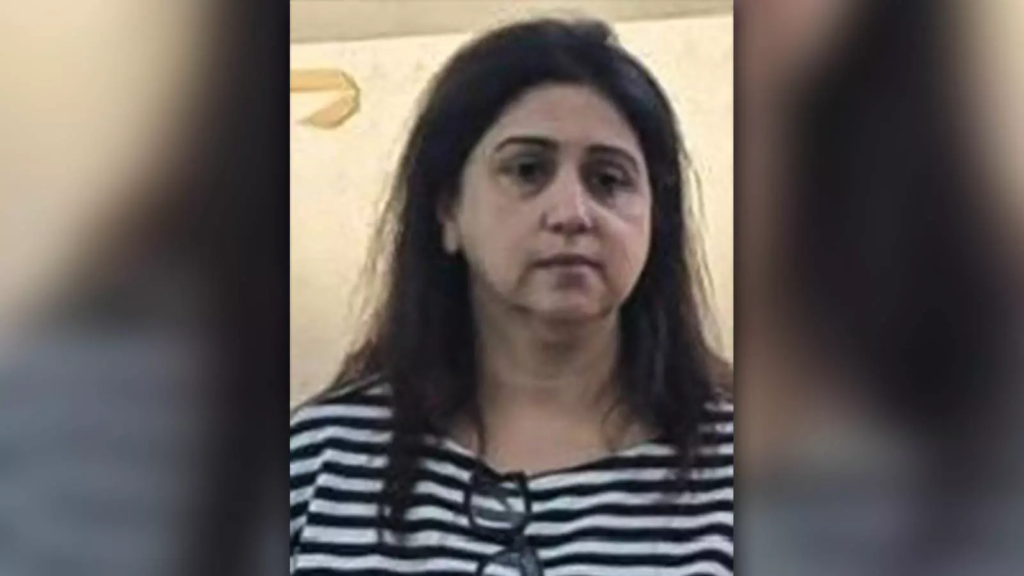CBI arrests Monica Kapoor in a major breakthrough for Indian law enforcement, ending a 25-year-long global manhunt. The fugitive, accused in a multi-crore financial fraud case, was located and apprehended in the United States and has now been brought back to India to face legal proceedings. Kapoor had been on the run since the late 1990s, evading multiple arrest warrants and court summons related to a high-value banking scam.
The arrest and deportation are being hailed as a major win for India’s international cooperation on criminal matters and a warning to other economic offenders trying to escape justice.
Who Is Monica Kapoor ?
Monica Kapoor, now in her early 50s, was once a rising business figure in the 1990s, linked to a web of companies involved in finance and investment schemes.
She came under investigation by the CBI after reports surfaced that her firm had defrauded multiple Indian banks and private investors, misrepresenting financial data and siphoning off funds.
According to officials, Kapoor disappeared from India just days before arrest warrants were issued in 1999, making her one of the country’s most elusive white-collar fugitives.

CBI Arrests Monica Kapoor: What Was She Accused Of?
CBI investigations revealed that Kapoor was part of a conspiracy involving fake documents, fraudulent loan applications, and shell companies. She and her associates reportedly obtained over ₹50 crore in loans and investments under false pretenses.
Victims included both public and private banks, several individual investors, and financial institutions.
Despite multiple court notices and summons, Kapoor failed to appear, leading to a non-bailable warrant and her being declared a proclaimed offender.
Her last known location at the time was traced to Europe, after which she vanished completely from the public eye.
How Did the CBI Track Her Down?
After nearly two decades of stalled leads and false sightings, the CBI intensified its international efforts in collaboration with Interpol and U.S. authorities.
In 2023, using new digital surveillance tools and global financial databases, investigators discovered that Kapoor was living under a false identity in California, working under a different name in a small consulting firm.
The breakthrough came after suspicious financial activity flagged by the Financial Intelligence Unit (FIU) led back to her former aliases and ultimately confirmed her identity.
The Arrest and Extradition
Once her identity was verified, the CBI issued a red corner notice through Interpol, and the U.S. Marshals Service executed the arrest in early June 2025.
Kapoor was taken into custody without resistance and detained pending legal review. After completing the necessary diplomatic and legal processes, she was formally extradited to India on July 8, 2025.
She arrived in New Delhi under tight security and was immediately presented before a special CBI court.
Current Status: What Happens Next?
The CBI has filed for her judicial custody, and sources say she is cooperating with authorities. Investigators are now focused on tracking the remaining members of the fraud network and recovering the stolen funds.
According to officials, Kapoor could face charges under multiple sections of the Indian Penal Code, including criminal conspiracy, cheating, forgery, and violations of the Prevention of Corruption Act.
If convicted, she may face up to 10 years of imprisonment, in addition to financial penalties and asset recovery actions.
Reactions From Officials
Senior officials at the CBI hailed the arrest as a “significant milestone in India’s fight against economic fugitives.”
“Monica Kapoor’s arrest sends a strong message to white-collar criminals who believe they can escape justice by fleeing the country,” said a spokesperson.
Indian law enforcement agencies have increasingly focused on extradition and global cooperation to bring back offenders, particularly after high-profile cases involving individuals like Vijay Mallya and Nirav Modi.

Why This Case Matters
The Monica Kapoor arrest is important not just for its legal implications, but also for public trust. Economic fraud cases involving bank loans and investor funds damage confidence in financial systems.
Bringing long-term fugitives to justice shows that India is serious about pursuing white-collar crime and working with global partners to achieve results.
With advanced technology, international data sharing, and diplomatic coordination, agencies now have more tools than ever to close in on fugitives—no matter how far they run.
Final Thoughts
The arrest of Monica Kapoor in the United States, after more than two decades on the run, marks the end of a long chase and the beginning of justice for victims.
Her return to India signals a new era where economic offenders cannot hide indefinitely behind international borders.
As legal proceedings begin, the country watches closely to see whether Kapoor will finally face the consequences of her alleged crimes—and whether this case will inspire further action on similar fugitives hiding abroad.
Read more – Netflix Stock: Is It Still a Smart Investment in 2025






